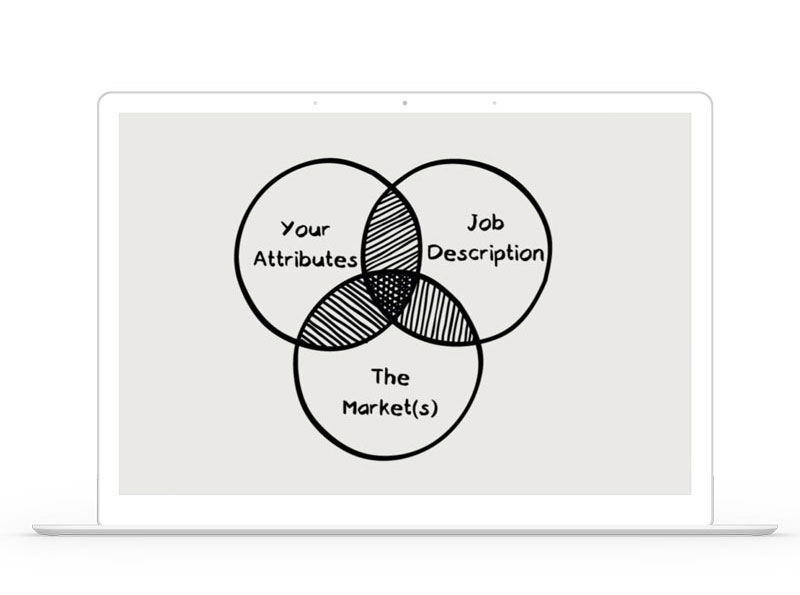How to customise your CV, and why you must do it
Applied for lots of jobs and never heard back? The reason may be that sending the same CV with just a slightly tweaked cover letter no longer works. It has become so easy for unqualified applicants to click and apply that employers are flooded with responses. Most now use Applicant Tracking Systems (ATS) to manage the volume. These systems check whether your CV matches the employer’s requirements. If it doesn’t, it is rejected immediately, no matter how genuinely suitable you are for the role.
Why customise each CV?
Let’s start with the end result. A CV should be clear, easy to read, and well organised. It needs to highlight your skills, experience, and qualifications in a way that shows employers you meet their needs and deserve to be short-listed. Put yourself in their shoes and ask: what qualities do you bring that make you a strong contender?
Getting your CV past the ATS filter
Many ATS robots do more than look for keywords. They often use AI to judge how well your CV fits the job overall, checking whether your achievements, training, and past roles match the employer’s job description. If your CV is not organised with this in mind, it is likely to be rejected before a human reads it.
Don't sound like a foreign robot - Ai CV writing can make you sound generic, keyword-stuffed, foreign or misaligned to the job description. I can spot it a mile off, and so can most HR people. It’s the same wording, line spacing, punctuation and it's cliche-ridden. So ironically you might be rejected for not being a real person!
~ Elle Bradshaw
My CV building process
-
Review of selection criteria
We look closely at what the employer is asking for and make sure your CV matches their needs.
-
Discussion about potential employer
We think about the employer’s culture, the type of work they do, and the situation they are in, so your CV speaks to what matters to them.
-
Personal qualities 'gap' analysis
We check how well your qualities fit the role, highlight your strengths, and reduce the impact of any weaker areas.
-
Initial CV build
We create the first draft of your CV, showing your skills and experience in the best possible way.
-
Review and Refinement
We then improve and polish the CV to make sure it tells a clear and convincing story about why you are right for the job.
-
Preparation of supporting documents and social media profile
After the CV is ready, we prepare any other documents you need and, if required, update your social media profile to give a consistent professional image.
-
Application
At the end, we help you put in a complete and well-prepared application to maximise your chances of getting an interview.
-
TAGS: Oxford CV Writer. Local CV writing support tailored for general jobseekers, first-time applicants, and those returning to work across Oxfordshire and the South-East. Our services CV writing in Oxford, Abingdon, Banbury, Bicester, Didcot, Thame, Wantage, Witney, Reading, Newbury, Aylesbury, High Wycombe, and Buckingham. We create customised, ATS-friendly CVs for roles in retail, administration, logistics, trades, hospitality, customer service, care, and warehousing.
I'm a qualified marketer and seasoned writer, which means I know exactly how to frame your CV not just as a list of jobs but as a compelling argument for why you deserve that interview spot.
~ Elle Bradshaw
Schedule an appointment
For a fifteen-minute conversation with Elle prior to purchase, please click on the telephone icon to arrange a complimentary call at a time that is mutually convenient
Tips for customising a CV: an overview
How do you customise each CV?
- What qualities matter most to the employer – We are not always the best judges of our own strengths. For example, you might assume being reliable and conscientious is standard, but not everyone is. Think about what you have achieved at work, what makes you stand out from colleagues, and the things you find easy that others struggle with. Then link these qualities to the job description. If you are unsure, ask a trusted friend or professional for feedback.
- Must-have requirements – Identify the qualifications, skills, and experience you must show to get through the first cut. Make sure these are easy to find in your CV.
- The employer’s market or sector – Consider what is happening in the employer’s industry and how that may affect the type of people they want to recruit.
- Transferable skills – Abilities gained in one type of job (customer service, manual handling, IT basics) often apply well in another and should be highlighted.
- Employer priorities – A small local business may look for a "safe pair of hands", while a large chain may be focused on consistency and meeting set procedures.
- Highlight key achievements – Show how you made a difference in past roles. Add achievements alongside duties to make your CV stand out. Use numbers and examples where you can, such as "Increased sales by 20%" or "Trained 5 new staff members".
Up to 70% of CVs are rejected during the ATS screening process. ATS algorithms are designed to swiftly and reliably identify the most qualified candidates for a job, and most CVs routinely fail to match the job description, keywords or selection criteria.
Build a Master CV
When was the last time you updated your CV? I don't mean just adding your last job, when did you last update every line of it? For many, it was during their last job search. The trouble is, when you are in a rush to apply, it is hard to remember all of your achievements. A quickly written, generic CV will not win you interviews in today’s competitive job market.
That is why creating a Master CV is so valuable. A Master CV is like a personal toolkit. By keeping it up to date, you can quickly create tailored versions for each job. Just as you might maintain health routines, maintaining your Master CV is an essential habit. It gives you a strong base to build from and helps set you apart when competing for interviews.
What is a Master CV?
A Master CV is a single document where you record every job, qualification, and accomplishment since leaving school. Your Master CV is for your eyes only. Never send it to an employer. Instead, use it as the source document from which you create customised CVs for each job. Even if an advert asks for a detailed CV, you still need to adapt it to the role.
How does a master CV help to customise applications?
Customising means aligning your CV and cover letter with the employer’s needs. Use the selection criteria and keywords from the job advert to highlight the parts of your track record that matter most for that role.

Elle Bradshaw in a The Daily Telegraph article by Liz Hoggard.
Why I'm a prime choice
CV Writing & Advice
Hello, I'm Elle. I personally take charge of every project, ensuring no aspect of your CV creation is passed off to CV mills, bots, contractors, or juniors. With over fifteen years in a recruitment agency, specialising in both recruitment and CV optimisation, I've seen the spectrum of application missteps and successes.
Given the 'ocean of ordinariness' I see in the current wave of poorly tailored, inartfully GPT'd executive CVs, it helps that I am a qualified marketer, author, and seasoned HR consultant.
My passion has always been creative writing and puzzle-solving. This blend of science, data, language, and originality is ideal for advanced job applications: understanding employer needs, matching skills, knowledge, cultural nuances, and experience to those needs, and presenting a compelling proposition.
Prefer to chat first? Phone me: 07537-133-488, Txt me: 07537-133-488 , Facebook me, or Whatsapp me.
Please complete this form to outline your needs and schedule a 15-minute chat to discuss your needs. I will respond with available time and date options.
Hitting the sweet spot with your CV

Selection criteria may not be explicitly stated in a job description, but addressing them is crucial if you are to align your application to the employer's needs, requirements, and circumstances.
- Your attributes: The first circle represents your (the applicant's) knowledge, achievements, and skills
- Job description: The second circle represents the employer's strategic and operational needs in filling the post
- The market: The third circle represents the broader trends and challenges facing the employer's industry
This succinctly illustrates why each senior executive CV and its accompanying documentation must be tailored to an employer's requirements, needs, and situation. Venn and the art of the CV (Bradshaw, Edwards 2022).
CV alignment with selection criteria
-
Begin with the employer's needs.
This vital process entails deeply considering the employer's selection criteria. Understanding their demands allows us to precisely tailor your application to meet their expectations.
-
Your attributes versus their needs.
We evaluate how your qualities, experience, and achievements align with the employer's selection criteria. This review guides our approach to accentuate your strengths and address or downplay any weaknesses, ensuring your application is best positioned.
-
Starting Your CV
The groundwork of your application is laid here with the creation of your CV's first draft. Utilising insights from earlier steps, we showcase your achievements, skills, and experience in a pitch crafted for the role.
-
CV review and refinement
Next, we carefully review and enhance your CV, focusing on crafting a narrative that aligns closely with the employer's requirements. Each aspect is examined to ensure optimal alignment and a compelling pitch.
-
Supporting documents and social media.
We prepare requested supporting materials like cover letters and answers to questions. We also create or fine-tune your social media presence to ensure it reflects a consistent and professional image, further supporting your application.
-
Application submission.
This final phase is where you submit the carefully curated and error-free application to the potential employer, ensuring it adheres to all specifications. This is designed to maximise your likelihood of being called for an interview.
-
This approach aims to boost your success in securing interviews by aligning your profile with employer expectations and weaving a persuasive story of your skills and experience.
Aligning your CV
Tailor your CV to the prospective employer's specific needs and demonstrate how your accomplishments align with their requirements. Providing concrete examples with metrics strengthens your case and enhances your chances of securing an interview.
- Your attributes: The first circle represents your (the applicant's) knowledge, achievements, and skills
- Job description: The second circle represents the employer's strategic and operational needs in filling the post
- The market: The third circle represents the broader trends and challenges facing the employer's industry


